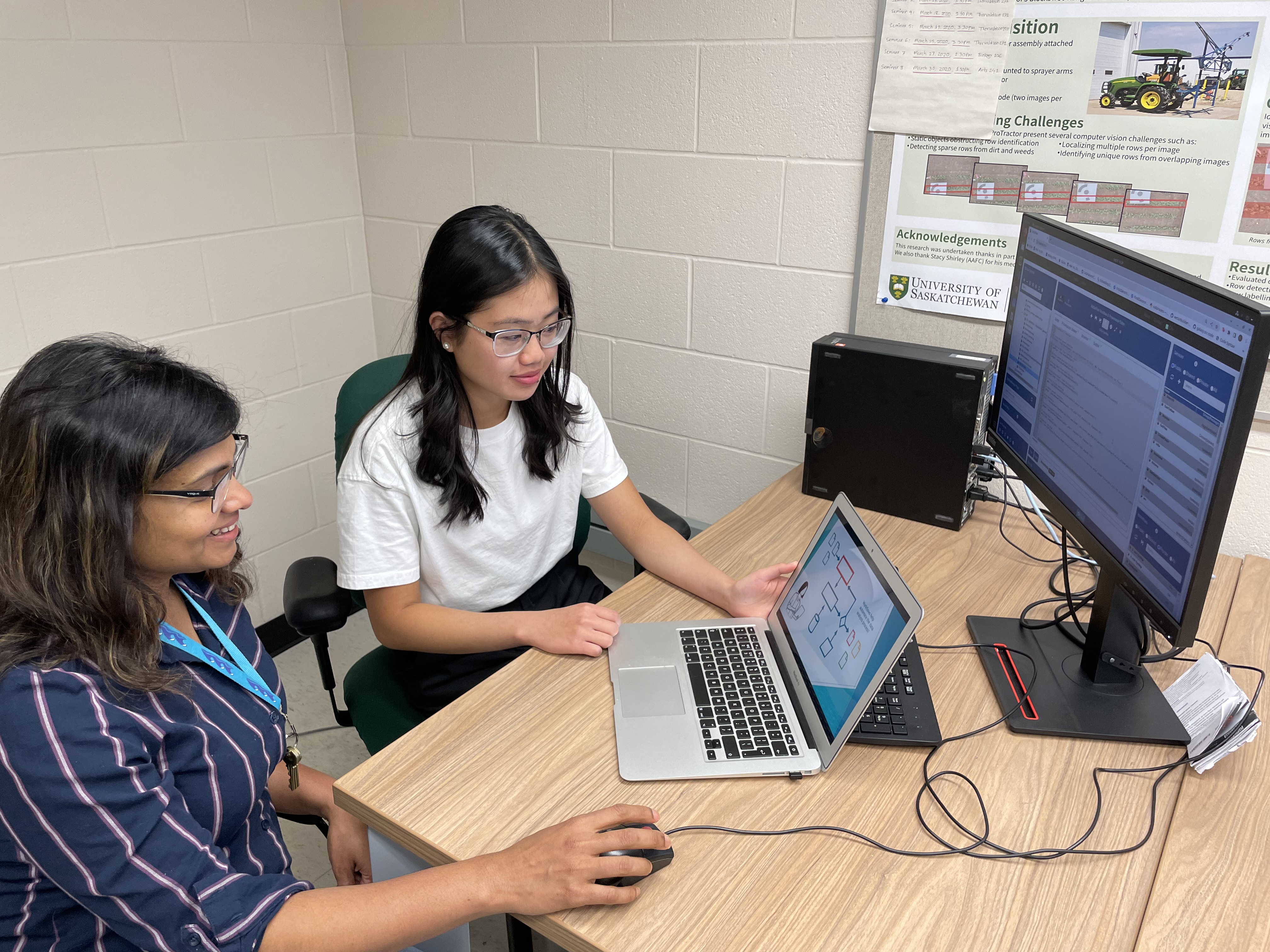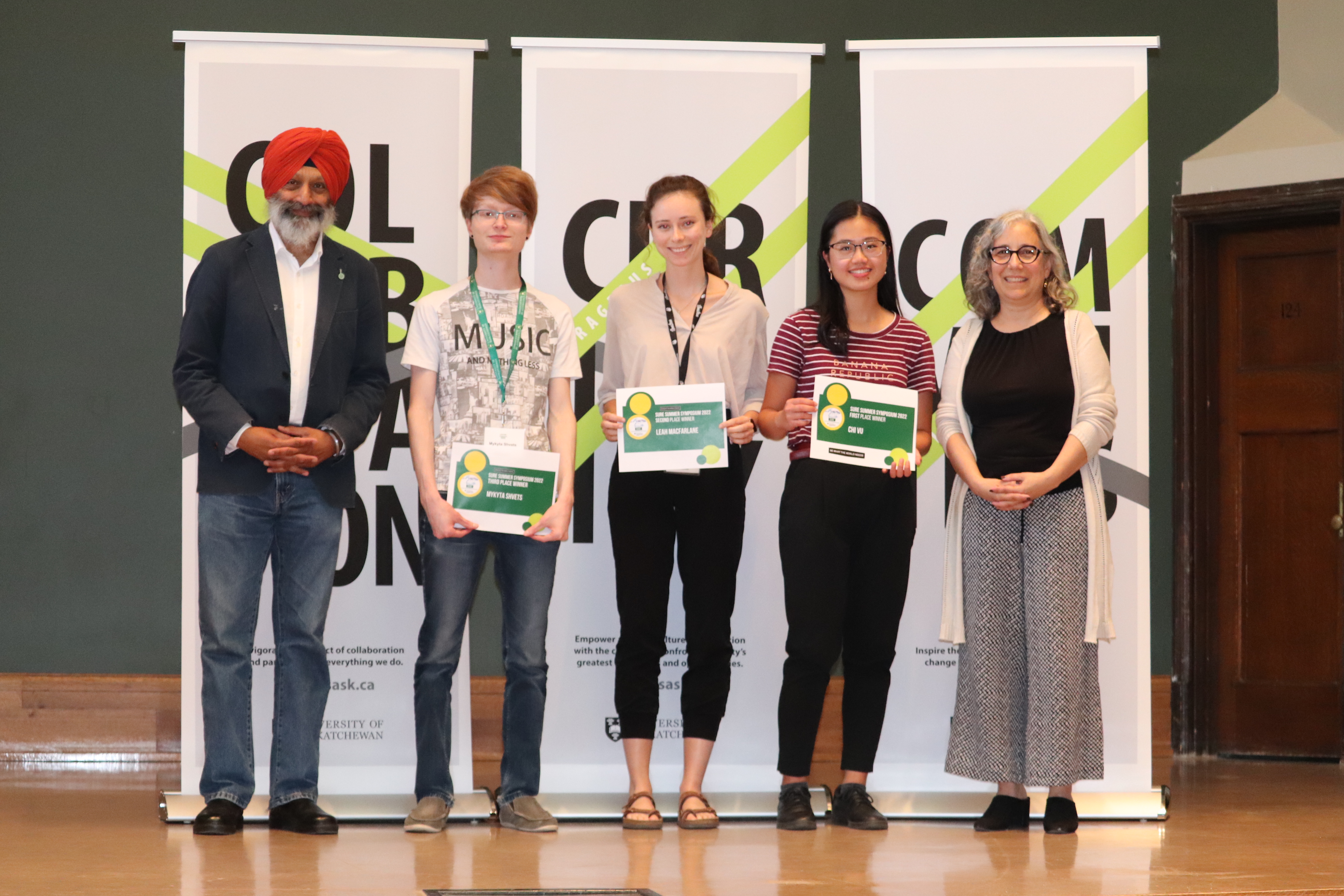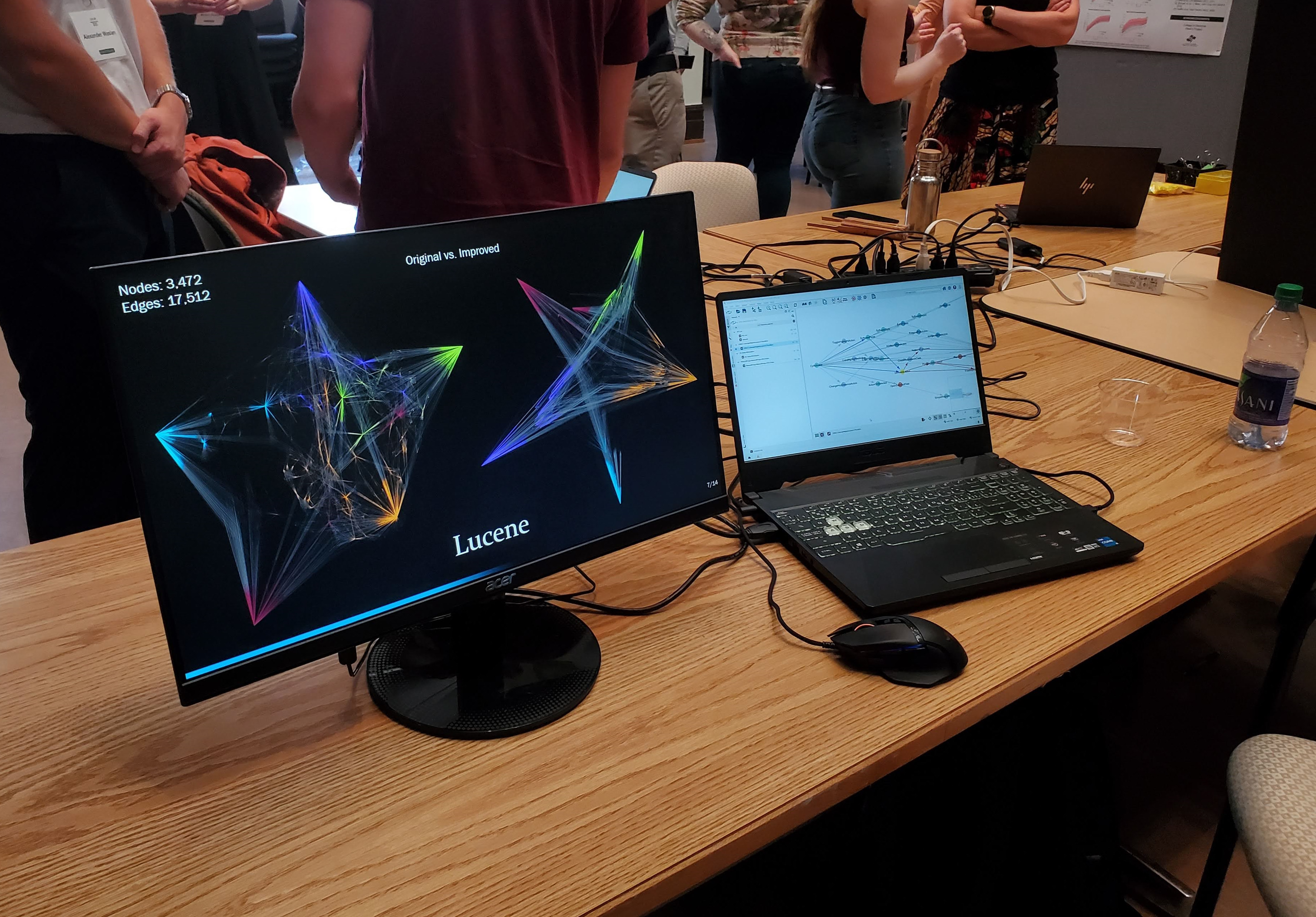
Computer Science and Undergraduate Research: Fast Forwarding the Research Landscape
At the recent Summer 2022 Student Undergraduate Research Experience (SURE) Symposium, two of the top three awards were taken by students from USask’s Computer Science department. The Undergraduate Research Initiative caught up with the two winners and their supervisors to learn more about how Computer Science is such a hotbed for undergraduate research!
By Merle MassieCongratulations are in order for Chi Vu and Mykyta Shvets of the Department of Computer Science at the University of Saskatchewan. They landed in first and third place, respectively, in the recent Student Undergraduate Research Experience (SURE) summer 2022 Symposium.

L to R: Dr. Baljit Singh (PhD), Mykyta Shvets, Leah Macfarlane, Chi Vu, and Dr. Debby Burshtyn (PhD) at the SURE summer Symposium 2022
Chi’s summer project in the Interactive Software Engineering and Analytics Lab investigated ways to integrate tools used in bioinformatics research to conduct data analysis within VizSciFlow, a program that supports scientific workflow management for scientists.
These kinds of programs can help large, multidisciplinary scientific teams manage complex data analysis, increasing productivity and delivery – making science easier. The judges rewarded Chi’s presentation, which broke down her work into easy-to-understand steps, with first place.
“I wanted to challenge myself to try something new,” Chi reported, and her push to enter into undergraduate research? “Curiosity,” she said, simply. A summer project gave Chi great balance: “there was plenty of room for exploration, but also guidance from my supervisor and colleagues, if I needed it – and I did need lots of it,” Chi added.

Student Chi Vu with research supervisor Dr. Banani Roy (PhD), summer 2022. Photo submitted.
Mykyta Shvets’ summer work was on graph visualization in the Visualization, Geometry and Algorithms LAB (VGA LAB). “I’m interested in the ways data can be displayed to the user in a more friendly manner.”
His work, which developed algorithms to visualize hierarchical structures or the relational influence of particular nodes, leveraged the principles of magnetic forces to increase a graph’s clarity and understandability. His visualization presentation won over the judges.

Mykyta Shvets' SURE Symposium 2022 presentation. Photo submitted.
Research, Mykyta reports, gives you a “sense of creating something new, since a lot of research is at the boundary of what we know and what we don’t know yet. It’s a glimpse of what you can accomplish.”
With all this amazing student work, we asked Mykyta and Chi’s supervisors, what do you look for in a student research assistant? Dr. Banani Roy (PhD), who served as Chi’s supervisor for her summer work, reported that commitment and interest are at the top of her list, followed by communication and (of course) some programming skills – it’s computer science, after all.
But there’s more: “A student always makes an impression,” Dr. Roy added, when they show not only the ability to follow directions but to find exploratory ways to add some “flourish and impact” to their work.
Dr. Debajyoti Mondal (PhD), who supervised Mykyta’s work, added to Dr. Roy’s view. Students must have “genuine passion” for the fundamentals of computer science, but a really good student assistant will have “persistence in pushing the research despite numerous failed attempts.”
Chi echoed the payoff for persistence: “Despite how frustrating they can be, I love the mistakes I make along the way, the struggles of debugging, and the challenges that come with taking different approaches to solve a problem. To me, computer science is multifaceted, dynamic, and fun.”
Dr. Mondal added, the best students understand that the research they do today may have a small impact now but could have a broad impact down the road. That’s why the Department of Computer Science supports numerous summer student opportunities, including assistantships and internships.
“Young minds are the keys to opening new doors of innovation,” reported Dr. Mondal. With early exposure, some guidance and some challenges, students take theoretical knowledge and build practical perspectives, said Dr. Roy. Their energy and initiative “can fast-forward our research landscape.” Dr. Mondal added.
Mykyta noted that doing research adds a different dimension to typical classroom student learning. “You face the problems yourself and discover interesting ways to solve them as you go.”
And a Symposium, both students reported, is a great way to dive into research communication, making summer work approachable.
“When I’m working with code and numbers,” Mykyta explained, “it’s easy to get technical with the details. However, it is also important to get the bigger overview of the topic. Creating a presentation for the Symposium helped me to do that.”
The Symposium event “created a greater sense of community for me” with other student researchers from across the campus Mykyta said.
Chi added, “Listening to other participants present their research left me in awe. I admire and relate to their passion for their work, and I know we will all move forward with a deeper appreciation for research.”
It’s the age of computers, big data, algorithms, software engineering, information visualization, artificial intelligence, and distributed computing. With plenty of research energy – from undergraduate students to faculty supervisors – Computer Science is rapidly staking its claim as a leading light in the USask research space.

